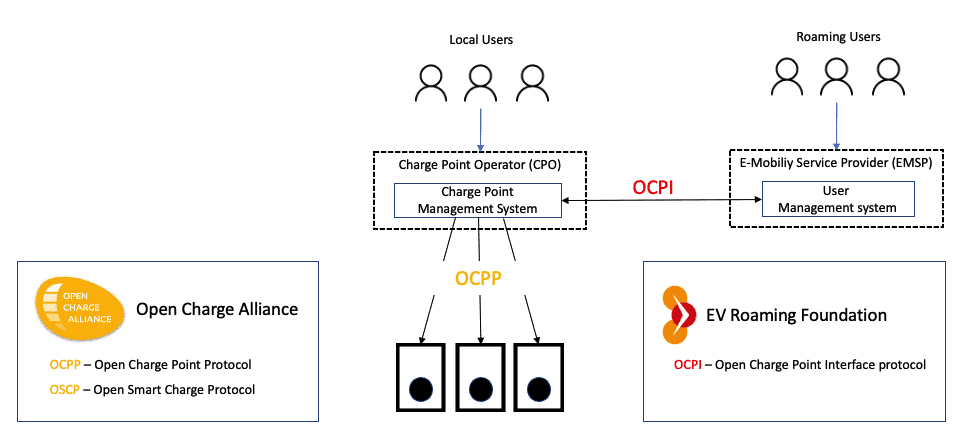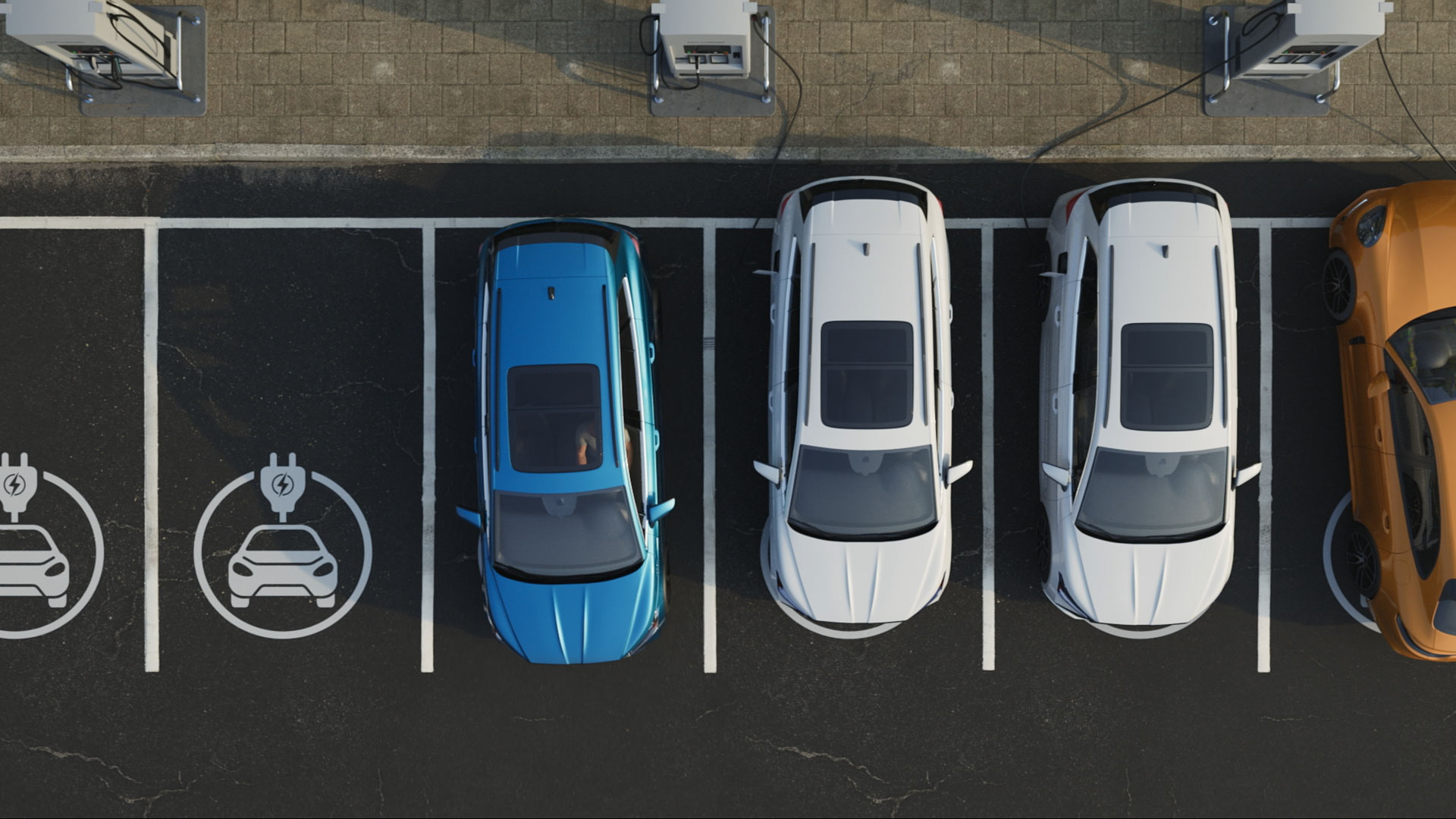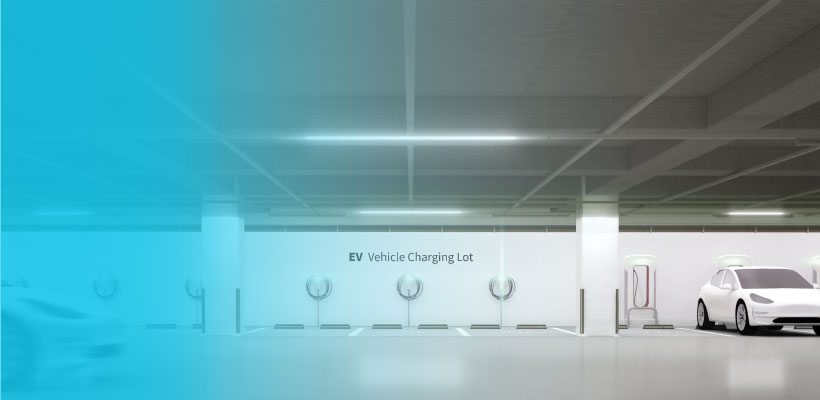An eMobility Service Provider (eMSP) is a company or organization that provides electric vehicle (EV) charging roaming services.
Using EV roaming, electric vehicle (EV) drivers can access charging services at various participating charging networks. Drivers can charge their vehicles in such networks without needing separate memberships or accounts with each individual network.
EV roaming is facilitated by using open protocols, such as the Open Charge Point Protocol (OCPP) and the Open Charging Point Interface (OCPI). These protocols enable communication and interoperability between different charging networks.
eMobility service provider (eMSP) vs. Charge Point Operator (CPO)
eMobility service provider (eMSP) and charging point operator (CPO) are terms that are often used to describe organizations that operate networks of electric vehicle (EV) charging stations. However, these terms are not necessarily mutually exclusive. It is possible for an organization to be both an eMSP and a CPO.

An eMSP focuses on the driver and fleet side. They provide billing and payment services for EV charging, as well as technical support and customer service. Examples of eMSPs include Plugshare, Zap-Map, and Octopus Electric Universe in the UK and Cellocharge in Israel. Some large EV fleets even created their own eMSP to allow their drivers to charge at public networks.
Echtgeld Casinos Düsseldorf: Lokale Tipps von Kasinique
Düsseldorf, die pulsierende Landeshauptstadt Nordrhein-Westfalens, ist nicht nur für ihre architektonischen Meisterwerke und die lebendige Kunst- und Kulturszene bekannt, sondern auch für ihre faszinierende Welt der Echtgeld-Casinos. Ob Sie ein leidenschaftlicher Glücksspieler sind oder einfach nur die aufregende Atmosphäre genießen möchten, Düsseldorf bietet eine Vielzahl an erstklassigen Casinos, die jeden Geschmack und jedes Niveau bedienen. In dieser Stadt, in der Unterhaltung und Spannung an der Tagesordnung stehen, laden die Echtgeld-Casinos zu einer unvergesslichen Erfahrung ein.
In diesem Artikel werden wir uns auf eine Reise durch die besten Echtgeld-Casinos in Düsseldorf begeben und Ihnen lokale Tipps von Experten präsentieren. Egal, ob Sie nach den neuesten Spielautomaten, klassischen Tischspielen oder exklusiven VIP-Bereichen suchen, wir haben für Sie die perfekten Empfehlungen. Tauchen Sie ein in die faszinierende Welt des Glücksspiels, erfahren Sie mehr über die Geschichte und Tradition dieser Einrichtungen und lassen Sie sich von unseren Insider-Informationen inspirieren. Sind Sie bereit, Ihr Glück auf die Probe zu stellen und unvergessliche Momente in den Echtgeld-Casinos Düsseldorfs zu erleben?
Beliebte Echtgeld Casinos in Düsseldorf
In Düsseldorf gibt es eine Vielzahl an Echtgeld-Casinos, die Glücksspielern ein authentisches und aufregendes Erlebnis bieten. Kasinique, eine vertrauenswürdige Online-Ressource für Casinobewertungen und -informationen, hat einige lokale Tipps für diejenigen zusammengestellt, die in der Landeshauptstadt Nordrhein-Westfalens ihr Glück versuchen möchten.
Eines der bekanntesten Casinos in Düsseldorf ist das Westspiel Casino, das sich direkt im Herzen der Stadt befindet. Dieses elegante Etablissement bietet eine große Auswahl an Tischspielen wie Roulette, Black Jack und Poker sowie zahlreiche Spielautomaten. Für Anfänger und Gelegenheitsspieler empfiehlt Kasinique, an den regelmäßig stattfindenden Turnieren und Pokerschulen teilzunehmen, um die Spielregeln und Strategien zu erlernen.
Für diejenigen, die ein etwas intimeres und exklusiveres Ambiente bevorzugen, ist das Spielbank Düsseldorf eine ausgezeichnete Wahl. Dieses Casino zeichnet sich durch seinen klassischen Stil und seine hochwertige Ausstattung aus. Hier können Besucher in einer eleganten Umgebung Spiele wie Roulette, Black Jack und Poker genießen. Kasinique rät, sich vorab über die Kleiderordnung zu informieren, da in diesem Casino ein gewisser Dresscode erwartet wird.
- Westspiel Casino: Innenstadt, große Auswahl an Spielen, Turniere und Pokerschulen
- Spielbank Düsseldorf: Exklusives Ambiente, klassischer Stil, Dresscode beachten
- Regelmäßige Veranstaltungen und Aktionen in den Casinos nutzen
- Verantwortungsbewusstes Spielen ist wichtig, um den Spaß zu erhalten
Exklusive Angebote und Boni für Echtgeld Spieler
Echtgeld Casinos Düsseldorf bieten eine aufregende Möglichkeit, das Glücksspiel in der pulsierenden Metropole am Rhein zu erleben. Ob Sie ein erfahrener Spieler oder ein Neuling sind, die Stadt hat einige der besten Casinos zu bieten, die eine Vielzahl von Tisch- und Automatenspielen anbieten. Von den eleganten Spielhallen in der Innenstadt bis hin zu den modernen Resorts am Stadtrand gibt es für jeden Geschmack etwas.
Eines der beliebtesten Echtgeld Casinos Düsseldorf ist das Westspiel Casino, das sich direkt im Herzen der Stadt befindet. Hier können Sie eine Vielzahl von Klassikern wie Roulette, Black Jack und Poker genießen, während Sie von der eleganten Atmosphäre und dem erstklassigen Service umgeben sind. Für diejenigen, die es etwas moderner mögen, ist das Casino Duisburg nur einen Katzensprung entfernt und bietet neben den traditionellen Tischspielen auch eine große Auswahl an Spielautomaten.
Egal, ob Sie ein Gelegenheitsspieler oder ein leidenschaftlicher Glücksspieler sind, Echtgeld Casinos Düsseldorf bieten eine unvergessliche Erfahrung. Hier sind einige Tipps von Kasinique, um Ihr Abenteuer zu maximieren:
- Informieren Sie sich im Voraus über die Kleiderordnung und Etikette des Casinos, damit Sie sich entsprechend vorbereiten können.
- Setzen Sie sich ein Limit für Ihre Ausgaben und halten Sie sich daran, um verantwortungsvoll zu spielen.
- Nutzen Sie die Angebote und Sonderaktionen der Casinos, um das Beste aus Ihrem Besuch herauszuholen.
- Lassen Sie sich von den freundlichen Croupiers beraten, wenn Sie Hilfe bei den Spielregeln benötigen.
Egal, ob Sie nach einem aufregenden Abend oder einem unvergesslichen Wochenende suchen, Echtgeld Casinos Düsseldorf haben alles, was Sie für ein erstklassiges Glücksspielerlebnis brauchen.
Sicherheit und Vertrauenswürdigkeit der Casinos
In Düsseldorf gibt es eine Reihe von erstklassigen Echtgeld-Casinos, die Glücksspielbegeisterten ein unvergessliches Erlebnis bieten. Eines der bekanntesten Casinos in der Stadt ist das Westspiel Casino Düsseldorf. Dieses moderne und elegante Casino befindet sich im Herzen der Stadt und bietet eine große Auswahl an Tischspielen wie Roulette, Black Jack und Poker sowie zahlreiche Spielautomaten. Die Atmosphäre ist geprägt von Luxus und Stil, und das freundliche Personal sorgt dafür, dass sich jeder Gast willkommen fühlt.
Für diejenigen, die etwas Abwechslung suchen, ist das Spielbank Duisburg nur eine kurze Autofahrt von Düsseldorf entfernt. Dieses Casino bietet neben den klassischen Casinospielen auch eine Vielzahl von Unterhaltungsmöglichkeiten wie Live-Musik und Shows. Die Atmosphäre ist lebhaft und energiegeladen, was es zu einem beliebten Treffpunkt für Glücksspieler und Unterhaltungssuchende macht.
Wenn Sie jedoch lieber in einer etwas intimeren Umgebung spielen möchten, ist das Casino Aachen eine ausgezeichnete Wahl. Dieses gemütliche Casino bietet eine breite Palette an Spielen und einen hervorragenden Kundenservice. Die Atmosphäre ist entspannt und einladend, und das Personal ist stets bemüht, den Gästen einen unvergesslichen Aufenthalt zu bereiten.
- Westspiel Casino Düsseldorf – Moderne Eleganz im Herzen der Stadt
- Spielbank Duisburg – Vielfältige Unterhaltung und lebhafte Atmosphäre
- Casino Aachen – Gemütliches Ambiente und hervorragender Kundenservice
Erfahrungsberichte von Düsseldorfer Spielern
Düsseldorf ist eine pulsierende Metropole, die nicht nur für ihre kulturelle Vielfalt und architektonischen Meisterwerke bekannt ist, sondern auch für ihre lebendige Casinoszene. Wenn Sie auf der Suche nach einer aufregenden Nacht voller Glücksspiel und Unterhaltung sind, sind die Echtgeld Casinos in Düsseldorf der perfekte Ort, um Ihr Glück zu versuchen.
Eines der bekanntesten Casinos in der Stadt ist das Spielcasino Düsseldorf, das sich direkt im Herzen der Altstadt befindet. Dieses elegante Etablissement bietet eine Vielzahl von Tischspielen wie Roulette, Black Jack und Poker sowie zahlreiche Spielautomaten. Die stilvollen Räumlichkeiten und die professionelle Atmosphäre machen jeden Besuch zu einem unvergesslichen Erlebnis.
Für diejenigen, die es etwas gemütlicher mögen, ist das Casino Duisburg eine hervorragende Option. Nur eine kurze Autofahrt von Düsseldorf entfernt, bietet dieses Casino eine entspannte Atmosphäre und eine breite Auswahl an Spielen. Ob Sie lieber an den Tischen sitzen oder die Automaten bevorzugen, hier finden Sie garantiert etwas nach Ihrem Geschmack.
- Spielcasino Düsseldorf: Innenstadt, elegante Atmosphäre, breites Angebot an Tisch- und Automatenspielen.
- Casino Duisburg: Entspannte Atmosphäre, vielfältiges Spielangebot, nur eine kurze Autofahrt entfernt.
Alternativen zu landbasierten Casinos: Online Glücksspiel
Düsseldorf, eine lebendige Metropole am Rhein, ist nicht nur für ihre pulsierenden Geschäftsviertel und ihre reiche Kulturszene bekannt, sondern auch für ihre aufregende Casinowelt. Wenn Sie auf der Suche nach einem unvergesslichen Casinoerlebnis sind, bieten die Echtgeld Casinos in Düsseldorf eine Vielzahl von Möglichkeiten, um Ihr Glück auf die Probe zu stellen. Von eleganten Spielsälen bis hin zu modernen Spielstätten finden Sie hier eine Auswahl an Orten, die Ihren Geschmack treffen werden.
Eines der bekanntesten Casinos in Düsseldorf ist das Westspiel Casino, das sich direkt im Herzen der Stadt befindet. Hier können Sie in einer stilvollen Atmosphäre eine Vielzahl von Tischspielen wie Roulette, Black Jack und Poker genießen. Für diejenigen, die es lieber etwas moderner mögen, bietet das Casino Merkur-Spielothek eine große Auswahl an Spielautomaten und elektronischen Tischspielen. Egal, ob Sie ein erfahrener Spieler oder ein Neuling sind, die freundlichen Mitarbeiter helfen Ihnen gerne weiter.
Wenn Sie jedoch nach einer etwas intimeren Casinoerfahrung suchen, empfehlen wir Ihnen das Spielcasino Düsseldorf. Dieses gemütliche Casino bietet eine entspannte Atmosphäre und eine persönliche Betreuung. Hier können Sie in aller Ruhe Ihre Strategien verfeinern und das Glücksspiel in vollen Zügen genießen. Egal, für welches Casino Sie sich entscheiden, Düsseldorf hält für jeden Geschmack und jedes Budget etwas Passendes bereit. Lassen Sie sich von der pulsierenden Casinoszene dieser Stadt verzaubern und erleben Sie unvergessliche Momente voller Spannung und Unterhaltung.
Düsseldorf ist eine Stadt voller Überraschungen, und die Echtgeld Casinos sind nur ein kleiner Teil davon. Egal, ob Sie ein erfahrener Spieler sind oder einfach nur die aufregende Atmosphäre genießen möchten, die örtlichen Casinos bieten eine Vielzahl von Unterhaltungsmöglichkeiten. Von den klassischen Tischspielen bis hin zu den modernen Slotmaschinen – hier findet jeder etwas nach seinem Geschmack. Lassen Sie sich von unseren lokalen Tipps inspirieren und tauchen Sie ein in die faszinierende Welt des Glücksspiels in Düsseldorf.
A charging point operator (CPO) is an organization that operates a network of EV charging stations. A CPO is responsible for managing the operation of the charging stations, including maintenance and repairs, as well as handling billing and payment for EV charging services.
Types of organizations that act as EMSPs
Multiple types of organizations can act as EMSPs. The most common types include:
- Mobility app vendors: These companies already provide eMobility services such as parking or EV station mapping services. They have a large audience of drivers and are adding charging roaming via an eMSP service to their customers.
- Leasing companies: Some leasing companies are adding EV charging via EMSPs as part of their service to their customers.
- Large commercial fleets: Those organizations need to manage a large group of drivers and help them charge at home, work, and on the go. An EMSPs roaming solution can facilitate on-the-go charging for company fleet vehicles.
- Vehicle OEMs: As more OEMs enter the RV space, they realize that one of the biggest barriers for drivers is range anxiety and the need for a solid charging network. Some OEMs are teaming up with existing CPOs to offer branded roaming services via OCPI to cope with that.
The main benefits of becoming an EMSP and providing EV roaming to your drivers
The benefits of EV roaming via OCPI include the following:
- Seamless access to charging stations: EV drivers can access charging stations from different service providers without signing up for multiple accounts or carrying multiple cards.
- Increased charging station availability: EV drivers can find and use charging stations more easily, as the availability and status of charging stations from different service providers are made visible through a single platform.
- Reduced costs: EV drivers can access charging stations from different service providers, reducing the need to pay multiple membership fees.
- Flexibility: EV drivers have more options for charging their vehicles, as they can access charging stations from different service providers and locations.
- Improved user experience: EV drivers can find, reserve, and pay for charging stations more easily through a single, unified platform.
- Better Data: OCPI allows for better data management for the EMSP owner. Data can be shared and collected in a standard format across all service providers, allowing for more accurate and useful data analytics.
- Interoperability: OCPI enables different service providers to communicate and share data with each other, allowing for more efficient and effective EV charging.
What does it take to become an EMSP?
To become an EMSP, an organization must consider business and technical aspects.
Business aspects include setting up bilateral agreements with CPOs, which include:
- Access to charging stations: Bilateral agreements give eMSPs access to the charging stations of multiple CPOs. This can help eMSPs expand their service offerings and increase their reach.
- Pricing and Revenue sharing: Bilateral agreements often include pricing and revenue-sharing arrangements. The EMSP and CPO have to agree on the price for EMSP drivers as revenue-sharing arrangements.
- Data sharing: Bilateral agreements may also include data-sharing arrangements related to the use of charging stations. This can help both parties gain valuable insights into the usage of their charging stations.
- Service level agreements: It’s also important to establish service level agreements that specify the responsibilities of each party.
Technical aspects include:
- Backoffice eMSP Platform: A system that allows users to locate and access charging stations, pay for charging services, and manage their vehicles and charge accounts. The platform must be interoperable, secure, and scalable.
- Mobile App: The mobile app is used to locate the charging stations, initiate a charging session and monitor its progress. They must also see a history of charging events and provide payment information. It’s important to ensure that the mobile app is user-friendly and secure.
- RFIDs: RFID tags often initiate a charging session with a participating CPO charge point. RFID tags and cards can be branded with the eMSP’s logo, colors, and other branding elements. The eMSP is responsible for RFID distribution to the drivers, while the back office eMSP software is responsible for maintaining those cards.
In conclusion
When people ask, “What does eMSP mean?” the answer is simple: an eMobility Service Provider (eMSP) is a company that makes EV charging easier by offering roaming services across various networks. Similarly, “EVSP” stands for Electric Vehicle Service Provider, which covers a wider range of services, including managing EV infrastructure. Both of these roles are vital in the expanding electric vehicle ecosystem, helping drivers charge their vehicles at multiple locations without needing different memberships. As the industry continues to grow, understanding the eMSP and EVSP meaning will become increasingly important for businesses and drivers alike.
Wevo Energy is a leading provider of software solutions for smart EV charging. We provide a software platform for CPOs and eMSPs that supports every scenario: apartment complexes, workplaces, fleets, destination, and public charging.


